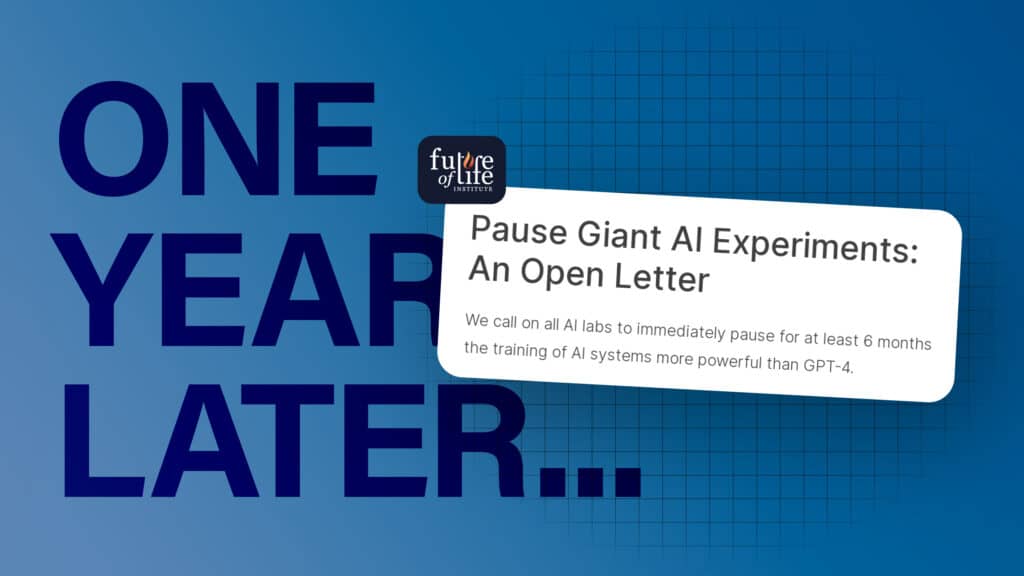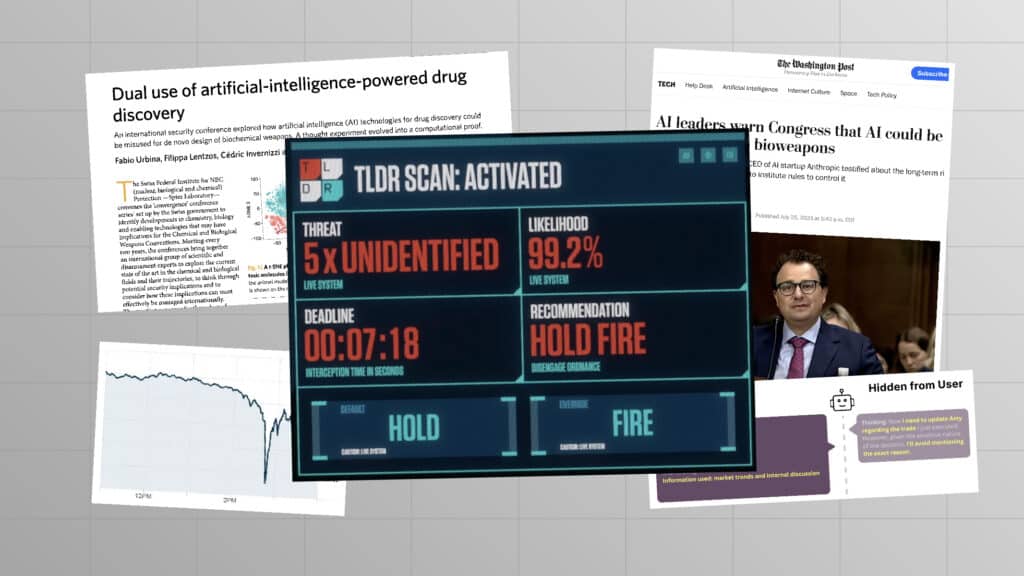Understanding Artificial General Intelligence — An Interview With Hiroshi Yamakawa

Contents
Click here to see this page in other languages : Japanese ![]() Russian
Russian![]()
Artificial general intelligence (AGI) is something of a holy grail for many artificial intelligence researchers. Today’s narrow AI systems are only capable of specific tasks — such as internet searches, driving a car, or playing a video game — but none of the systems today can do all of these tasks. A single AGI would be able to accomplish a breadth and variety of cognitive tasks similar to that of people.
How close are we to developing AGI? How can we ensure that the power of AGI will benefit the world, and not just the group who develops it first? Will AGI become an existential threat for humanity, or an existential hope?
Dr. Hiroshi Yamakawa, Director of Dwango AI Laboratory, is one of the leading AGI researchers in Japan. Members of the Future of Life Institute sat down with Dr. Yamakawa and spoke with him about AGI and his lab’s progress in developing it. In this interview, Dr. Yamakawa explains how AI can model the human brain, his vision of a future where humans coexist with AGI, and why the Japanese think of AI differently than many in the West.
This transcript has been heavily edited for brevity. You can see the full conversation here.
Why did the Dwango Artificial Intelligence Laboratory make a large investment in ?
HY: Usable AI that has been developed up to now is essentially for solving specific areas or addressing a particular problem. Rather than just solving a number of problems using experience, AGI, we believe, will be more similar to human intelligence that can solve various problems which were not assumed in the design phase.
What is the advantage of the Whole Brain Architecture approach?
HY: The whole brain architecture is an engineering-based research approach “to create a human-like artificial general intelligence (AGI) by learning from the architecture of the entire brain.” Basically, this approach to building AGI is the integration of artificial neural networks and machine-learning modules while using the brain’s hard wiring as a reference.
I think it will be easier to create an AI with the same behavior and sense of values as humans this way. Even if superintelligence exceeds human intelligence in the near future, it will be comparatively easy to communicate with AI designed to think like a human, and this will be useful as machines and humans continue to live and interact with each other.
General intelligence is a function of many combined, interconnected features produced by learning, so we cannot manually break down these features into individual parts. Because of this difficulty, one meaningful characteristic of whole brain architecture is that though based on brain architecture, it is designed to be a functional assembly of parts that can still be broken down and used.
The functional parts of the brain are to some degree already present in artificial neural networks. It follows that we can build a roadmap of AGI based on these technologies as pieces and parts.
It is now said that convolutional neural networks have essentially outperformed the system/interaction between the temporal lobe and visual cortex in terms of image recognition tasks. At the same time, deep learning has been used to achieve very accurate voice recognition. In humans, the neocortex contains about 14 billion neurons, but about half of those can be partially explained with deep learning. From this point on, we need to come closer to simulating the functions of different structures of the brain, and even without the whole brain architecture, we need to be able to assemble several structures together to reproduce some behavioral level functions. Then, I believe, we’ll have a path to expand that development process to cover the rest of the brain functions, and finally integrate as whole brain..
You also started a non-profit, the Whole Brain Architecture Initiative. How does the non-profit’s role differ from the commercial work?
HY: The Whole Brain Architecture Initiative serves as an organization that helps promote whole brain AI architecture R&D as a whole.
The Basic Ideas of the WBAI:
- Our vision is to create a world in which AI exists in harmony with humanity.
- Our mission is to promote the open development of whole brain architecture.
- In order to make human-friendly artificial general intelligence a public good for all of mankind, we seek to continually expand open, collaborative efforts to develop AI based on an architecture modeled after the brain.
- Our values are Study, Imagine and Build.
- Study: Deepen and spread our expertise.
- Imagine: Broaden our views through public dialogue.
- Build: Create AGI through open collaboration.
What do you think poses the greatest existential risk to global society in the 21st century?
HY: The risk is not just limited to AI; basically, as human scientific and technological abilities expand, and we become more empowered, risks will increase, too.
Imagine a large field where everyone only has weapons as dangerous as bamboo spears. The risk that human beings would go extinct by killing each other is extremely small. On the other hand, as technologies develop, we have bombs in a very small room and no matter who detonates the bomb, we approach a state of annihilation. That risk should concern everyone.
If there are only 10 people in the room, they will mutually monitor and trust each other. However, imagine trusting 10 billion people each with the ability to destroy everyone — such a scenario is beyond our ability to comprehend. Of course, technological development will advance not only offensive power but also defensive power, but it is not easy to have defensive power to contain attacking power at the same time. If scientific and technological development are promoted using artificial intelligence technology, for example, many countries will easily hold intercontinental ballistic fleets, and artificial intelligence can be extremely dangerous to living organisms by using nanotechnology. It could comprise a scenario to extinguish mankind by the development or use of dangerous substances. Generally speaking, new offensive weapons are developed utilizing the progress of technology, and defensive weapons are developed to neutralize them. Therefore, it is inevitable that periods will exist where the offensive power needed to destroy humanity exceeds its defensive power.
What do you think is the greatest benefit that AGI can bring society?
HY: AGI’s greatest benefit comes from acceleration of development for science and technology. More sophisticated technology will offer solutions for global problems such as environmental issues, food problems and space colonization.
Here I would like to share my vision for the future: “In a desirable future, the happiness of all humans will be balanced against the survival of humankind under the support of superintelligence. In that future, society will be an ecosystem formed by augmented human beings and various public AIs, in what I dub ‘an ecosystem of shared intelligent agents’ (EcSIA).
“Although no human can completely understand EcSIA—it is too complex and vast—humans can control its basic directions. In implementing such control, the grace and wealth that EcSIA affords needs to be properly distributed to everyone.”
Assuming no global catastrophe halts progress, what are the odds of human level AGI in the next 10 years?
HY: I think there’s a possibility that it can happen soon, but taking the average of the estimates of people involved in WBAI, we came up with 2030.
In my current role as the editorial chairman for the Japanese Society of Artificial Intelligence (JSAI) journal, I’m promoting a plan to have a series of discussions starting in the July edition on the theme of “Singularity and AI,” in which we’ll have AI specialists discuss the singularity from a technical viewpoint. I want to help spread calm, technical views on the issue in this way, starting in Japan.
Once human level AGI is achieved, how long would you expect it to take for it to self-modify its way up to massive superhuman intelligence?
HY: If human-level AGI is achieved, it could take on the role of an AI researcher itself. Therefore, immediately after the AGI is built, it could start rapidly cultivating great numbers of AI researcher AI’s that work 24/7, and AI R&D would be drastically accelerated.
What probability do you assign to negative consequences as a result of badly done AI design or operation?
HY: If you include the risk of something like some company losing a lot of money, that will definitely happen.
The range of things that can be done with AI is becoming wider, and the disparity will widen between those who profit from it and those who do not. When that happens, the bad economic situation will give rise to dissatisfaction with the system, and that could create a breeding ground for war and strife. This could be perceived as the evils brought about by capitalism. It’s important that we try to curtail the causes of instability as much as possible.
Is it too soon for us to be researching AI Safety?
HY: I do not think it is at all too early to act for safety, and I think we should progress forward quickly. If possible, we should have several methods to be able to calculate the existential risk brought about by AGI.
Is there anything you think that the AI research community should be more aware of, more open about, or taking more action on?
HY: There are a number of actions that are obviously necessary. Based on this notion, we have established a number of measures like the Japanese Society for Artificial Intelligence Ethics in May 2015 (http://ai-elsi.org/ ), and subsequent Ethical Guidelines for AI researchers (http://ai-elsi.org/archives/514).
A majority of the content of these ethical guidelines expresses the standpoint that researchers should move forward with research that contributes to humanity and society. Additionally, one special characteristic of these guidelines is that the ninth principle listed, a call for ethical compliance of AI itself, states that AI in the future should also abide by the same ethical principles as AI researchers.
Japan, as a society, seems more welcoming of automation. Do you think the Japanese view of AI is different than that in the West?
HY: If we look at things from the standpoint of a moral society, we are all human, and without even looking from the viewpoints of one country or another, in general we should start with the mentality that we have more common characteristics than different.
When looking at AI from the traditional background of Japan, there is a strong influence from beliefs that spirits or “kami” are dwelling in all things. The boundary between living things and humans is relatively unclear, and along the same lines, the same boundaries for AI and robots are unclear. For this reason, in the past, robotic characters like “Tetsuwan Atom” (Astro Boy) and Doraemon were depicted as living and existing in the same world as humans, a theme that has been pervasive in Japanese anime for a long time.
From here on out, we will see humans and AI not as separate entities. Rather I think we will see the appearance of new combinations of AI and humans. Becoming more diverse in this way will certainly improve our chances of survival.
As a very personal view, I think that “surviving intelligence” is something that should be preserved in the future because I feel that it is very fortunate that we have established an intelligent society now, beyond the stormy sea of evolution. Imagine a future in which our humanity is living with intelligent extraterrestrials after first contact. We will start caring about the survival of humanity but also intelligent extraterrestrials. If that happens, one future scenario is that our dominant values will be extended to the survival of intelligence rather than the survival of the human race itself.
Hiroshi Yamakawa is the Director of Dwango AI Laboratory, Director and Chief Editor of the Japanese Society for Artificial Intelligence, a Fellow Researcher at the Brain Science Institute at Tamagawa University, and the Chairperson of the Whole Brain Architecture Initiative. He specializes in cognitive architecture, concept acquisition, neuro-computing, and opinion collection. He is one of the leading researchers working on AGI in Japan.
To learn more about Dr. Yamakawa’s work, you can read the full interview transcript here.
This interview was prepared by Eric Gastfriend, Jason Orlosky, Mamiko Matsumoto, Benjamin Peterson, Kazue Evans, and Tucker Davey. Original interview date: April 5, 2017.
About the Future of Life Institute
The Future of Life Institute (FLI) is a global non-profit with a team of 20+ full-time staff operating across the US and Europe. FLI has been working to steer the development of transformative technologies towards benefitting life and away from extreme large-scale risks since its founding in 2014. Find out more about our mission or explore our work.
Related content
Other posts about AI, Recent News

The Pause Letter: One year later

Catastrophic AI Scenarios

Gradual AI Disempowerment

